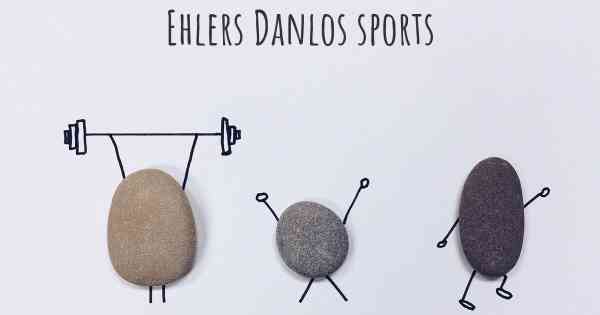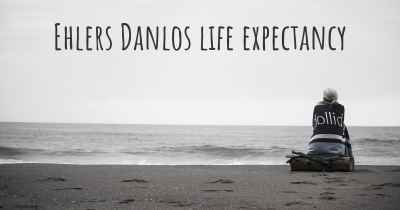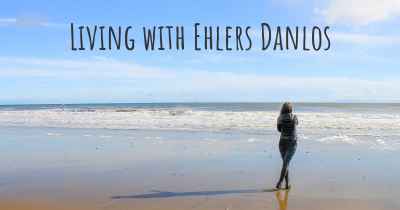Is it advisable to do exercise when affected by Ehlers Danlos? Which activities would you suggest and how intense should they be?
See if it is advisable for people with Ehlers Danlos to practice sports and which ones are the most recommended if you have Ehlers Danlos

Ehlers-Danlos syndrome (EDS) is a group of genetic disorders that affect the connective tissues in the body. These tissues provide support and structure to the joints, skin, blood vessels, and other organs. EDS can cause various symptoms, including joint hypermobility, skin fragility, and chronic pain. If you have been diagnosed with EDS, it is important to approach exercise with caution and seek guidance from healthcare professionals.
Exercise can be beneficial for individuals with EDS, as it can help improve muscle strength, joint stability, and overall physical function. However, it is crucial to choose the right activities and modify them to suit your individual needs and limitations. Here are some recommendations for exercise with EDS:
1. Low-impact aerobic exercises: Engaging in activities that promote cardiovascular fitness without putting excessive stress on the joints is generally advisable. This can include walking, swimming, cycling, or using an elliptical machine. Start with shorter durations and gradually increase the intensity and duration as tolerated.
2. Strength training: Building muscle strength can help stabilize the joints and reduce the risk of injury. Focus on exercises that target major muscle groups, such as squats, lunges, and modified push-ups. It is important to start with light weights or resistance bands and gradually progress to heavier weights as your strength improves.
3. Core stabilization exercises: Strengthening the core muscles can provide additional support to the spine and improve overall stability. Exercises like planks, bridges, and gentle Pilates movements can be beneficial. Ensure proper form and avoid any movements that cause pain or discomfort.
4. Flexibility exercises: Stretching can help improve joint range of motion and reduce muscle tightness. However, individuals with EDS should be cautious not to overstretch or push beyond their comfortable range. Gentle stretching exercises, such as yoga or tai chi, can be beneficial. Avoid extreme positions and listen to your body's signals.
5. Balance and proprioception exercises: EDS can affect balance and coordination, so incorporating exercises that challenge these aspects can be helpful. This can include activities like standing on one leg, using balance boards, or practicing yoga poses that improve stability.
6. Postural exercises: EDS can contribute to poor posture and spinal alignment. Specific exercises targeting postural muscles, such as shoulder retractions, scapular squeezes, and gentle neck stretches, can help improve posture and reduce associated discomfort.
It is crucial to approach exercise with caution and listen to your body. Individuals with EDS may have varying degrees of joint instability and pain, so it is important to adapt exercises to your specific needs. Here are some additional considerations:
- Seek guidance from healthcare professionals: Consult with a healthcare provider, such as a physical therapist or exercise physiologist, who has experience working with individuals with EDS. They can provide personalized recommendations and guidance on exercise modifications.
- Start slowly and progress gradually: Begin with low-intensity exercises and gradually increase the duration and intensity as tolerated. This allows your body to adapt and reduces the risk of overexertion or injury.
- Listen to your body: Pay attention to any pain, discomfort, or excessive fatigue during or after exercise. If an activity causes significant pain or joint instability, modify or avoid it. It is important to find a balance between challenging yourself and avoiding excessive strain.
- Use supportive equipment: Depending on your specific needs, using supportive equipment such as braces, orthotics, or assistive devices may be beneficial during exercise. These can provide additional joint stability and reduce the risk of injury.
- Stay hydrated and manage symptoms: EDS can be associated with symptoms like fatigue, dizziness, and heat intolerance. Ensure proper hydration, take breaks as needed, and manage any symptoms that may arise during exercise.
- Consider working with a professional: If you are unsure about how to safely and effectively exercise with EDS, consider working with a qualified exercise professional who can provide guidance and support tailored to your specific needs.
Remember, every individual with EDS is unique, and what works for one person may not work for another. It is important to listen to your body, seek professional guidance, and make modifications as necessary. By approaching exercise with caution and finding the right balance, you can reap the benefits of physical activity while minimizing the risk of injury or exacerbating symptoms.
Posted Apr 11, 2017 by Montana 1670
Posted May 10, 2017 by stairphobe 3070
Do what you can. Don't do too much exercise because then you will feel the pain.
Posted May 25, 2017 by Maria 2051
Posted May 26, 2017 by Stephanie 800
Posted May 27, 2017 by Jude 2050
Posted May 27, 2017 by Ashley 950
Posted May 28, 2017 by Celi 2000
Posted May 31, 2017 by KathrynOConnor 2200
Posted Sep 27, 2017 by Lbond94 4100
Posted Oct 6, 2017 by Sasha 2050
Posted Oct 7, 2017 by Sharon 7050
Posted Oct 7, 2017 by Brittany 500
Posted Oct 25, 2017 by Dolores 3050
Posted May 26, 2018 by Danielle 1500
Posted Mar 21, 2019 by pianocat_61 1400
Posted Sep 29, 2019 by Amy 13500
Posted May 12, 2020 by Alex 3551
Posted Nov 19, 2021 by NuNu 2550
Posted Nov 28, 2022 by Taiy rinaldi-bull 600
Posted Mar 25, 2017 by Paula Lopez 1151
Posted Aug 16, 2017 by Apolline 1205
Posted Aug 17, 2017 by Sandrine 1790
No contact sport
No sport traction or weight bearing.
Swimming and riding are recommended. Swimming, because the water does not have the weight of the body and work every muscle. Of course not crawl or butterfly in order to preserve the shoulder. The riding for the empathy of the horses.
The song, which is seeking 300 muscles is also a way to build up muscles and clear the head.
When the frequency and intensity it is necessary to do sports if our body permits but moderately. The aim is to strengthen the muscles around the joints to keep the past well-housed.
Posted Aug 30, 2017 by Ehos 1050
Posted Aug 30, 2017 by Kayla Rarine 2000








